
“The theory of generations” for the formation of the assortment of multi-brand

In the early 90s of the XX century. Economist Neil Howe and historian William Strauss, finding out why contradictions arise between people of different age groups, independently came to the same and unexpected conclusions. Using their conclusions, which were summarized in the “theory of generations”, the author proposes an approach to the formation of the assortment of a multi-brand shoe store.
Text: Alexander Erokhin, Executive Director of LLC "Business Center" Ermak ", Ph.D., p. n. from.
In 1991, their joint scientific work “Generations” was published. Research results have shown that among generations, four types are clearly traced, replacing each other. The authors conditionally divided these types into “prophets / idealists”, “nomads / activists”, “heroes / conciliators” and “artists / opportunists”. Since these generations replaced each other without failures, the authors of the book proposed to correlate these generations with the seasons: spring - "prophets", summer - "nomads", autumn - "heroes", winter - "artists". On the basis of these studies and the later published book The Fourth Transformation, a theory emerged, now known as the "theory of generations."
It is known that the change of generations takes about 80 years, each generation as a category is present in history for about 20 years.
Optimistic heroes
In Russia, among the people living today, the oldest are "heroes" who were born in 1901 - 1922. in the "autumn" period. Let's call this generation OPTIMISTS. The worldview of this generation was formed until the early 30s. This generation survived the revolutions of 1905 and 1917, the Civil War, epidemics, famine, NEP, the first five-year plans, collectivization of agriculture and other upheavals at the beginning of the century. People who are now over 85 years old firmly believe in a happy future for the Motherland and a just communist idea. These are people of duty, responsible, pedantic, hard-working and philanthropic.
Silent Artists
The generation born in the winter from 1923 to 1942 is the MILKERS. The generation that survived the Stalinist repressions and camps, the Great Patriotic War, the period of the restoration of the national economy was tacit, fulfilling, patient and law-abiding.
The prophets of victory
Generation 1943 - 1963 ("Spring") we will call the WINNERS. This generation grew up in a superpower, in the conditions of "confidence in the future." During this period, the country won the catastrophe war, brought the first man into space, actively expanded the housing stock - in the 60s, most citizens moved from basements and barracks to housing that was rather comfortable for those times - communal apartments, or even to separate apartments. For people of this generation, all tasks are within reach, for them there are no insurmountable obstacles. WINNERS overcome the difficulties of deprivation in a permanent mode, achieving the goals set for them is the goal of life, and its active image is the norm.
Individualist nomads
Generation 1963 - 1983 ("Summer") - this is the generation of the "cold war", a tough confrontation between systems, up to the overcoming Caribbean crisis. It grew and was brought up during the period of the "Iron Curtain", the absolute closeness of the country, the Brezhnev stagnation, a total shortage of both products and information. During the formation of this generation, "two plagues" arose - synthetic drugs and AIDS. The employment of workaholic parents with exhausting work in the name of the country's power made this generation more independent, a generation "with a key around its neck." The main qualities for them were a constant readiness for changes in the external environment, changes in all aspects of public and private life, a fatal reliance only on their own strength. Let's call this generation INDIVIDUALISTS.
New Optimists-Informatics
Generation "autumn" 1982 - 2000 has not yet fully entered into a meaningful independent life. This is the generation of the mirror image of OPTIMISTS (1901 - 1922). The collapse of the USSR, the terrorist attacks on Dubrovka and in Beslan, which shook the psyche of most people, new universal fears of the "bird flu" epidemics. This period of terrible transformations and tragedies was inharmoniously combined with the fantastic speed of development of information technologies and the introduction of computers into all spheres of human activity. The categories of "real" and "virtual" for this generation have no formal boundaries. This is the generation of the "BIG FINGER" who dials SMS on the keyboard of the "mobile phone". The standard of living of their parents has grown significantly, therefore, the "children" were protected in every possible way, deprived of independent choice, instilled in the Western values of the "celebration" of the number of banknotes. This is a generation of "obedient and controlled" and at the same time very self-confident people, devoid of fundamental knowledge in any area. For these people, high and immediate remuneration for work will be important, although duty and morality are not abstract qualities for them. Let's call this generation the INFORMATIANS generation.
We list all generations in chronological order:
OPTIMISTS, SILENTS, WINNERS, INDIVIDUALISTS, INFORMATICS (they are OPTIMISTS on a new round of a generational spiral.)
The psychophysical reactions of generations to the historical conditions in which they grew, matured and formed, are quite stable and massive (as expected), so each generation has a very specific set of behavioral preferences.
These preferences are most vividly formulated by Russian scientists Evgenia Shamis and Alexey Antipov, members of the Personnel Touch consulting bureau.
How to apply the results of these studies to shoe subjects
Currently, the most active players in the consumer market are the generation of WINNERS, INDIVIDUALISTS and INFORMATICS.
For the WINNERS, the main criterion when choosing a product is its status. By purchasing a Mercedes car (BMW, Audi…), a Swiss watch (Vasheron Constantin, Patek Philippe…) and even a Lamborgini lawn mower, the WINNER is absolutely sure that such an acquisition will strongly push him up the social ladder. Of course, the WINNER will prefer shoes from Prada, Manolo Blanick, Dolche & Gabbana ..., in extreme cases - Baldinini, Pachiotti ..., that is, European shoes of a very high price range, mainly Italian. Seeing a Chinese couple in a shoe store, even if the WINNER really liked it, he is unlikely to buy it, because this would lower his status.
A trip to the store for the WINNERS is a pathological necessity. Being confident in his own importance and awareness, he will feel like an expert in the store, so the WINNER visits specialty stores more often. If he needs a pair of shoes, he will go to Crocus City Mall (if he lives or is located in Moscow), as a last resort to one of the shoe centers, where there are thousands of these shoe pairs. The WINNER will walk for a long time, study, compare models, select, measure ... and continue to compare. The choice for him is no less important than the fact of the acquisition. In relation to brands, the WINNERS are monogamous. Having learned once in childhood that Salamander is a status, the WINNER will carry this performance throughout his life. Brands may already lose their leading positions in the market or disappear altogether, but the WINNER will still be sure that Salamander is No. 1.
Thus, the choice of WINNERS is European (mainly Italian) shoes of a high price range of well-known (status) brands.
The preferences of INDIVIDUALISTS are unambiguously correlated with surprise. It is important for him to learn something new and unusual in a product. It is important for an INDIVIDUALIST to acquire a unique item. If he sees a pair of shoes with a removable sole or a spare set of colored laces in the store, he will definitely buy it. The purchased footwear may not have a well-known brand, the main thing is its uniqueness or some kind of “trick” in the footwear, it may be “marsh and“ superfrost-resistant ”TopMan shoes or a pair of the same brand with removable protectors.
INDIVIDUALISTS do not accept the imposition of help by the seller, tips, or even just attention to them as buyers. They love to turn everything in their hands, touch, try, check, without experiencing any kind of attention to themselves from the service personnel. But in search of the right footwear, an INDIVIDUALIST will not “wool” the whole city, he will go to a shoe store “within walking distance” and buy what he is looking for. He knows exactly what he needs, he does not think about the price, even being sure that he is overpaying.
The INDIVIDUALIST's attitude to the brand is rather neutral, more often indifferent. A loud, well-known brand may even be frightening for him - my friends have ADIDAS, RIEKER, ARA ... - this will not suit me.
Thus, the choice of INDIVIDUALISTS is both unique samples of shoes of an unusual design, regardless of brand and price range, and comfortable shoes.
In contrast, INFORMATICS INDIVIDUALISTS are committed to brand awareness. Fluent in fashion, INFORMATICS know the priorities in the modern hierarchy of brands. They are bought. Often INFORMATICS buy the mood, but not the product itself. It was INFORMATICS who coined the Western term "shopping". His favorite store is a huge shopping center (for example, MEGA for Moscow). He (the shopping center) is a cultural temple for them, where they like to spend time if they have money. Awareness of one's own importance and the illusion of exclusivity indirectly instilled in INFORMATICS a belief in the importance of ecology. INFORMATICS will not eat GMO products, and a pair of shoes they buy must have a label with information that it is an environmentally friendly product, or “relieves” stress, or “breathes”, or comfortable. In general, this circumstance may lead shoe manufacturers to certain marketing "moves".
Thus, the choice of INFORMATICS is modern, especially fashionable shoe brands that combine environmental friendliness and comfort.
Silencers, who prefer to store everything for future use, preferably in bulk, demand reliability, durability and blockiness from shoes, when a broken heel can be easily replaced in a workshop, and even better - with a spare one on your own. For this group, the brand is absolutely not important, something else is important - the price, because these are people whose main income is a pension, not often - the help of children. Therefore, for them there are two main landmarks - high-quality, solid and inexpensive shoes.
The group of OPTIMISTS, according to their preferences, is unlikely to differ from the SILENTS, so we will combine them into one group.
Having determined the preferences of the studied groups, it is easy, using the statistical data of demographic studies (table 1), to formulate requirements for the assortment of a multi-brand store.
Formed above "shoe preferences" of the studied age groups, combined with the data in Table 1 by the "mask" method, will easily formulate requirements for the quantitative proportions of the assortment of a multi-brand shoe store:
- modern, especially fashionable youth shoe brands that combine comfort and environmental friendliness - ~ 30% in a 50/50 ratio for men's and women's shoes. Average price range;
- Unique, special models of little-known brands of unusual design and comfortable shoes ~ 30% in the ratio of 50 / 50 for men's and women's shoes. Medium and high price range;
- European (mainly Italian) models of status brands of a high price range - ~ 30% in the ratio of 50 / 50 for men's and women's shoes;
- high-quality, solid, wear-resistant shoes of a low price range - ~ 15% in the ratio of 30 / 70 for men's and women's shoes.
The given recommendations on the ratio of men's and women's shoes do not contradict the results of demographic studies shown in the table, but reflect the numerical estimates of the statistical "mask" of sales - men's and women's shoes of a number of chain shoe companies.
The percentage ratio between men's and women's shoes does not mean at all that the absolute quantities of ordered models must strictly correspond to it. As practice shows, the ratio of absolute sales between men's and women's shoes ranges from 10/90 to 40/60.
As you can easily see, in accordance with the results presented in the table, the practical recommendations of the article will not differ depending on the location of the shoe store (see figures for the distribution of the "general population" and "urban population").
The author hopes that the owners of shoe stores and chains can easily transform the above recommendations on the assortment composition, taking into account the specific features of their business and their own ideas in solving the problem under study.
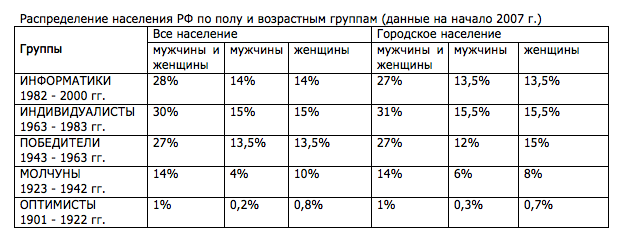
| Please rate the article |
Materials on the topic
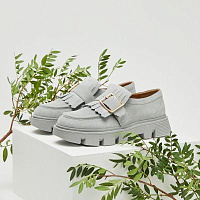
Specifics of shoe assortment management on marketplaces and growth points
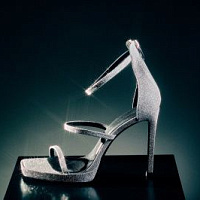
5 shoe models from Russian brands for New Year's Eve
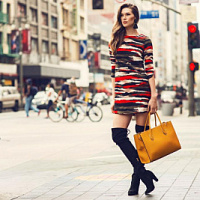
What to consider when expanding the assortment of a shoe store to include clothing
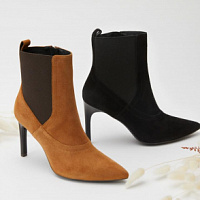
How to correctly apply category management when managing the assortment of shoes for the marketplace

Bertsy: what to look for when choosing a model
Popular
 Louis Vuitton opens a new factory in Italy
Louis Vuitton has opened its second shoe factory in Italy. After opening the first one in Fiesso d'Artico in Veneto, the LVMH flagship brand has just opened a new production site dedicated to this category of footwear in the industrial zone of Civitano in the Marche region. There is also another brand production facility in Tuscany, where bags and leather accessories are produced, writes fr.fashionnetwork.com.
Louis Vuitton opens a new factory in Italy
Louis Vuitton has opened its second shoe factory in Italy. After opening the first one in Fiesso d'Artico in Veneto, the LVMH flagship brand has just opened a new production site dedicated to this category of footwear in the industrial zone of Civitano in the Marche region. There is also another brand production facility in Tuscany, where bags and leather accessories are produced, writes fr.fashionnetwork.com.
 American buyers couldn't buy Birkin bags and sued Hermès
French fashion house Hermès is facing a lawsuit in California from two customers who were unable to purchase exclusive Birkin bags. The fashion house is accused of unfair commercial practices.
American buyers couldn't buy Birkin bags and sued Hermès
French fashion house Hermès is facing a lawsuit in California from two customers who were unable to purchase exclusive Birkin bags. The fashion house is accused of unfair commercial practices.
 We are ready for active development in the Russian market
Friedrich Naumann, CEO of the Tamaris brand, told Shoes Report about the company’s ambitious plans, business development in Russia and expansion of the retail network, and also shared details about new collections and launches.
We are ready for active development in the Russian market
Friedrich Naumann, CEO of the Tamaris brand, told Shoes Report about the company’s ambitious plans, business development in Russia and expansion of the retail network, and also shared details about new collections and launches.
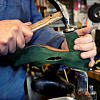 “Discount for repairs” of clothes and shoes in France supported workshops
The French have calculated the benefits of a program that encourages consumers to repair clothes and shoes by providing discounts on these services in certified workshops. The “repair discount” program began operating in France in November last year. Over the six months of operation of this program, the number of calls to repair shops in France increased 10 times and amounted to 250 repairs. The French saved 000 million euros, writes leparisien.fr.
“Discount for repairs” of clothes and shoes in France supported workshops
The French have calculated the benefits of a program that encourages consumers to repair clothes and shoes by providing discounts on these services in certified workshops. The “repair discount” program began operating in France in November last year. Over the six months of operation of this program, the number of calls to repair shops in France increased 10 times and amounted to 250 repairs. The French saved 000 million euros, writes leparisien.fr.
 Coach turned to Big Data analysis and won the interest of a young audience
American handbag brand Coach has planned the success of its Tabby model among a younger audience, Generation Z, by turning to big data analysis, abandoning traditional and analogue tools, such as human intuition or the ability of any executive to sense “which way the wind will blow,” writes B.O.F.
Coach turned to Big Data analysis and won the interest of a young audience
American handbag brand Coach has planned the success of its Tabby model among a younger audience, Generation Z, by turning to big data analysis, abandoning traditional and analogue tools, such as human intuition or the ability of any executive to sense “which way the wind will blow,” writes B.O.F.
 Why is it so important to work with customer reviews, analyze them and use them in your work?
Customer reviews are of great, invaluable importance when selling a product. However, many companies do not always understand this: they do not collect reviews, respond only to positive ones and do not work with negative ones. This is a big mistake and omission of the brand. In this article, together with SR digital marketing expert Tatyana Vasilyeva, we understand the intricacies and nuances of working with customer reviews and explain why it is worth paying attention to your customer reviews, and how this can increase your sales.
Why is it so important to work with customer reviews, analyze them and use them in your work?
Customer reviews are of great, invaluable importance when selling a product. However, many companies do not always understand this: they do not collect reviews, respond only to positive ones and do not work with negative ones. This is a big mistake and omission of the brand. In this article, together with SR digital marketing expert Tatyana Vasilyeva, we understand the intricacies and nuances of working with customer reviews and explain why it is worth paying attention to your customer reviews, and how this can increase your sales.
 The Euro Shoes@CAF exhibition will be held in Almaty
From March 11 to 13, the Euro Shoes@CAF (Central Asia Fashion) exhibition will be held in Almaty at the Atakent exhibition complex. The exhibition, which is the largest international event in the fashion industry in Central Asia, will present collections of clothing, shoes and accessories.
The Euro Shoes@CAF exhibition will be held in Almaty
From March 11 to 13, the Euro Shoes@CAF (Central Asia Fashion) exhibition will be held in Almaty at the Atakent exhibition complex. The exhibition, which is the largest international event in the fashion industry in Central Asia, will present collections of clothing, shoes and accessories.
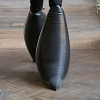 New “dutik” from Rick Owens presented at the show in Paris
Strange bulky shoes are another trend of our troubled times, and it’s impossible to ignore. American designer Rick Owens presented voluminous inflated latex boots at a show in Paris, which, according to him, were created in collaboration with the young London designer Straighteye, who likes to experiment with architectural volumes.
New “dutik” from Rick Owens presented at the show in Paris
Strange bulky shoes are another trend of our troubled times, and it’s impossible to ignore. American designer Rick Owens presented voluminous inflated latex boots at a show in Paris, which, according to him, were created in collaboration with the young London designer Straighteye, who likes to experiment with architectural volumes.
 VAGA SHOES is a new participant in the Euro Shoes premiere collection
The Russian women's shoe factory VAGA SHOES will take part for the first time in the international exhibition of footwear and accessories Euro Shoes premiere collection in Moscow.
VAGA SHOES is a new participant in the Euro Shoes premiere collection
The Russian women's shoe factory VAGA SHOES will take part for the first time in the international exhibition of footwear and accessories Euro Shoes premiere collection in Moscow.
 Euro Shoes will start operating on February 19 in Moscow!
The winter session of the international exhibition of footwear and accessories Euro Shoes premiere collection will be held in Moscow at the Expocenter from February 19 to 22. The organizers promise the presence of all the main participants at the exhibition, as well as new names from Europe, Asia and Russia.
Euro Shoes will start operating on February 19 in Moscow!
The winter session of the international exhibition of footwear and accessories Euro Shoes premiere collection will be held in Moscow at the Expocenter from February 19 to 22. The organizers promise the presence of all the main participants at the exhibition, as well as new names from Europe, Asia and Russia.
 John Galliano and Christian Louboutin created the Tabi collection for Maison Margiela
Maison Margiela creative director John Galliano and French shoe designer Christian Louboutin released a shoe collaboration that was included in the Maison Margiela Artisanal spring 2024 couture collection. The design duo created six versions of the Tabi shoe. All shoe models in the collection have a split toe - a characteristic touch of the signature Tabi shoe model of the Maison Margiela brand. And Christian Louboutin gave the shoe its signature red sole.
John Galliano and Christian Louboutin created the Tabi collection for Maison Margiela
Maison Margiela creative director John Galliano and French shoe designer Christian Louboutin released a shoe collaboration that was included in the Maison Margiela Artisanal spring 2024 couture collection. The design duo created six versions of the Tabi shoe. All shoe models in the collection have a split toe - a characteristic touch of the signature Tabi shoe model of the Maison Margiela brand. And Christian Louboutin gave the shoe its signature red sole.
 Euro Shoes starts in a month in Moscow!
There is less than a month left before the main exhibition of shoes and accessories in Russia - Euro Shoes Premiere Collection. The event will take place from February 19 to 22 in Moscow at the Expocenter, and, as always, in partnership with the largest international clothing exhibition in Russia, CPM Premiere Moscow.
Euro Shoes starts in a month in Moscow!
There is less than a month left before the main exhibition of shoes and accessories in Russia - Euro Shoes Premiere Collection. The event will take place from February 19 to 22 in Moscow at the Expocenter, and, as always, in partnership with the largest international clothing exhibition in Russia, CPM Premiere Moscow.
 Why Rendez-Vous and Yandex Lavka released a “bread bag”
Shoe retailer Rendez-Vous announced the launch of a spring collaboration with Yandex Lavka and released a roll that resembles the shape of a woman’s handbag. This “Bread Bag” is presented in the Yandex.Lavka application at a price of 249 rubles. On the product packaging there is a promotional code for 1000 rubles, which can be spent in the Rendez-Vous network.
Why Rendez-Vous and Yandex Lavka released a “bread bag”
Shoe retailer Rendez-Vous announced the launch of a spring collaboration with Yandex Lavka and released a roll that resembles the shape of a woman’s handbag. This “Bread Bag” is presented in the Yandex.Lavka application at a price of 249 rubles. On the product packaging there is a promotional code for 1000 rubles, which can be spent in the Rendez-Vous network.
 Christian Louboutin presented a collection in a cowboy style
At the Loubi Show in Paris, the French luxury brand Christian Louboutin presented its fall 2024 collection, following the trend - in the style of the Wild West. It included cowboy boots and rhinestone loafers.
Christian Louboutin presented a collection in a cowboy style
At the Loubi Show in Paris, the French luxury brand Christian Louboutin presented its fall 2024 collection, following the trend - in the style of the Wild West. It included cowboy boots and rhinestone loafers.
 Camper has released innovative sneakers - designers
Spanish brand Camper's new Roku sneaker features six interchangeable components to create up to 64 different looks and color combinations. Roku means "six" in Japanese.
Camper has released innovative sneakers - designers
Spanish brand Camper's new Roku sneaker features six interchangeable components to create up to 64 different looks and color combinations. Roku means "six" in Japanese.
 Fashion Week takes place in Moscow
Fashion Week takes place in the Russian capital. Events include fashion shows, markets where you can purchase clothes, bags and accessories, and a B2B Showroom for fashion industry professionals.
Fashion Week takes place in Moscow
Fashion Week takes place in the Russian capital. Events include fashion shows, markets where you can purchase clothes, bags and accessories, and a B2B Showroom for fashion industry professionals.
 Fashion trends Fall-Winter 2023/24 for commercial footwear purchases
Permanent contributor to Shoes Report. Elena Vinogradova, an expert in sales and purchases in the fashion business, prepared an overview of the trends for the autumn-winter 2023/24 season especially for us.
Fashion trends Fall-Winter 2023/24 for commercial footwear purchases
Permanent contributor to Shoes Report. Elena Vinogradova, an expert in sales and purchases in the fashion business, prepared an overview of the trends for the autumn-winter 2023/24 season especially for us.
 MSCHF and Crocs launch "Big Yellow Boots"
Creator of the Big Red Boots, Brooklyn brand MSCHF has teamed up with American plastic clog and sandal brand Crocs for another oversized shoe. The new Big Yellow Boots will go on sale on August 9th.
MSCHF and Crocs launch "Big Yellow Boots"
Creator of the Big Red Boots, Brooklyn brand MSCHF has teamed up with American plastic clog and sandal brand Crocs for another oversized shoe. The new Big Yellow Boots will go on sale on August 9th.
 Five rules of professional lighting for a shoe store - something that is relevant in any season
When developing a lighting concept for shoe retailers, it is important to take into account not only the history of the brand, the architectural content of the premises, the target audience of the stores, but also the seasonality of the goods. With the onset of the cold season, client preferences change: bright weightless shoes are replaced by more massive models in discreet dark colors. Despite significant differences in summer and winter collections, the overall philosophy of the brand, its recognition should remain unchanged at any time of the year. Tatyana Ryzhova, an SR lighting expert in fashion retail, has identified five basic rules for a competent lighting concept for a shoe store for readers of the magazine, which will help to present winter assortment to customers in a winning way.
Five rules of professional lighting for a shoe store - something that is relevant in any season
When developing a lighting concept for shoe retailers, it is important to take into account not only the history of the brand, the architectural content of the premises, the target audience of the stores, but also the seasonality of the goods. With the onset of the cold season, client preferences change: bright weightless shoes are replaced by more massive models in discreet dark colors. Despite significant differences in summer and winter collections, the overall philosophy of the brand, its recognition should remain unchanged at any time of the year. Tatyana Ryzhova, an SR lighting expert in fashion retail, has identified five basic rules for a competent lighting concept for a shoe store for readers of the magazine, which will help to present winter assortment to customers in a winning way.
 Bertsy: what to look for when choosing a model
Bertsy and tactical boots are becoming more and more relevant footwear, and not only because of the start of the hunting season. In Russia, there are several dozen enterprises producing this type of footwear. Oleg Tereshin, Deputy Chief Technologist of ZENDEN, told Shoes Report about the differences and features of ankle boots and what you should pay attention to when buying them in specialized retail and online.
Bertsy: what to look for when choosing a model
Bertsy and tactical boots are becoming more and more relevant footwear, and not only because of the start of the hunting season. In Russia, there are several dozen enterprises producing this type of footwear. Oleg Tereshin, Deputy Chief Technologist of ZENDEN, told Shoes Report about the differences and features of ankle boots and what you should pay attention to when buying them in specialized retail and online.
 EURO SHOES presents an updated section of the GLOBAL SHOES exhibition with collections of shoe and bag brands from Asian countries
EURO SHOES premiere collection is expanding. Along with the traditional pool of leading European footwear brands from Germany, Spain, Italy and Turkey, several dozen footwear and bag brands from the Middle Kingdom will be presented in the GLOBAL SHOES section at the Moscow Expocentre from August 29 to September 1.
EURO SHOES presents an updated section of the GLOBAL SHOES exhibition with collections of shoe and bag brands from Asian countries
EURO SHOES premiere collection is expanding. Along with the traditional pool of leading European footwear brands from Germany, Spain, Italy and Turkey, several dozen footwear and bag brands from the Middle Kingdom will be presented in the GLOBAL SHOES section at the Moscow Expocentre from August 29 to September 1.
 I doubt and object: how to find an approach to difficult clients?
How good and serene would be the work of a salesperson if the customers were calm, cheerful, always knew exactly what they wanted, and bought, bought, bought! It is a pity that this is possible only in dreams. Therefore, we will not dream, but we will act. Together with Maria Gerasimenko, a permanent author of SR, we understand the doubts and objections of buyers and build a strategy for working with them. Our expert pays special attention to the two main objections of buyers, on which 82% of sales are lost.
I doubt and object: how to find an approach to difficult clients?
How good and serene would be the work of a salesperson if the customers were calm, cheerful, always knew exactly what they wanted, and bought, bought, bought! It is a pity that this is possible only in dreams. Therefore, we will not dream, but we will act. Together with Maria Gerasimenko, a permanent author of SR, we understand the doubts and objections of buyers and build a strategy for working with them. Our expert pays special attention to the two main objections of buyers, on which 82% of sales are lost.
 Two prominent Russian fashion designers Vyacheslav Zaitsev and Valentin Yudashkin passed away
One after another, two days apart, Vyacheslav Zaitsev and Valentin Yudashkin, outstanding fashion designers, whose work for the whole world was a kind of hallmark of fashionable Russia, left this world.
Two prominent Russian fashion designers Vyacheslav Zaitsev and Valentin Yudashkin passed away
One after another, two days apart, Vyacheslav Zaitsev and Valentin Yudashkin, outstanding fashion designers, whose work for the whole world was a kind of hallmark of fashionable Russia, left this world.
 World Footwear Yearbook: Global footwear production reaches 23,9 billion pairs and is back to pre-pandemic levels
The Portuguese association of shoe manufacturers APICCAPS published the 13th edition of the international statistical bulletin World Footwear Yearbook for 2023, according to which in 2022 the production and export of shoes worldwide increased by 7,6% and 9%, respectively, and the world production of shoes reached 23,9 billion couples and returned to pre-pandemic levels.
World Footwear Yearbook: Global footwear production reaches 23,9 billion pairs and is back to pre-pandemic levels
The Portuguese association of shoe manufacturers APICCAPS published the 13th edition of the international statistical bulletin World Footwear Yearbook for 2023, according to which in 2022 the production and export of shoes worldwide increased by 7,6% and 9%, respectively, and the world production of shoes reached 23,9 billion couples and returned to pre-pandemic levels.
 Rostov footwear brand Novak presented a collection of sneakers and sneakers
In the spring-summer 2023 season, the Rostov-on-Don shoe brand Novak presented a cute collection of sneakers and sneakers for every day. The upper of the shoe is made of genuine leather, suede, nubuck, the sole is made of light EVA.
Rostov footwear brand Novak presented a collection of sneakers and sneakers
In the spring-summer 2023 season, the Rostov-on-Don shoe brand Novak presented a cute collection of sneakers and sneakers for every day. The upper of the shoe is made of genuine leather, suede, nubuck, the sole is made of light EVA.
 How to create selling visual content for online based on the identified unique selling proposition?
What is a USP (unique selling proposition) and what is it for? Why is the USP creation service in great demand among fashion retailers today? How to create a working USP? Answers questions and provides step-by-step guidance on how to define your unique selling proposition and work with it to increase online sales, Tatyana Vasilyeva, an SR expert in the promotion and development of fashion brands.
How to create selling visual content for online based on the identified unique selling proposition?
What is a USP (unique selling proposition) and what is it for? Why is the USP creation service in great demand among fashion retailers today? How to create a working USP? Answers questions and provides step-by-step guidance on how to define your unique selling proposition and work with it to increase online sales, Tatyana Vasilyeva, an SR expert in the promotion and development of fashion brands.
 Shoe educational program: what shoe soles are made of
“What is the difference between TEP and EVA? What does tunit promise me? Is PVC glue? What is the sole of these shoes made of? ”- the modern buyer wants to know everything. In order not to smash his face in front of him and be able to explain whether such a sole suits him in soles, carefully read this article. In it, process engineer Igor Okorokov tells what materials the soles of shoes are made of and what makes each of them so good.
Shoe educational program: what shoe soles are made of
“What is the difference between TEP and EVA? What does tunit promise me? Is PVC glue? What is the sole of these shoes made of? ”- the modern buyer wants to know everything. In order not to smash his face in front of him and be able to explain whether such a sole suits him in soles, carefully read this article. In it, process engineer Igor Okorokov tells what materials the soles of shoes are made of and what makes each of them so good.
 How to set prices that will earn
Some businessmen still confuse the concept of margin with the concept of trade margins and set prices for their goods, guided solely by the example of competitors. No wonder they go broke! Analyst at the Academy of Retail Technologies Maxim Gorshkov gives several tips and formulas with which you can set not only ruinous, but also profitable prices.
How to set prices that will earn
Some businessmen still confuse the concept of margin with the concept of trade margins and set prices for their goods, guided solely by the example of competitors. No wonder they go broke! Analyst at the Academy of Retail Technologies Maxim Gorshkov gives several tips and formulas with which you can set not only ruinous, but also profitable prices.
 Sales of shoes and accessories: effective techniques for business rhetoric
Which speech modules are effective in communicating with potential and current customers of shoe stores, and which are not, Anna Bocharova, a business consultant, knows.
Sales of shoes and accessories: effective techniques for business rhetoric
Which speech modules are effective in communicating with potential and current customers of shoe stores, and which are not, Anna Bocharova, a business consultant, knows.
 We form the salary of sellers: expert advice
“How do you charge your consultants for personal or general sales?” Is one of the most popular questions causing a lot of controversy and gossip on the online forums of retail business owners. Indeed, how to properly form the earnings of sellers? But what about bonuses, where to get a sales plan from, do employees allow them to buy goods at discounted stores? In search of truth, the Shoes Report turned to a dozen shoe retailers, but no company wanted to disclose its motivation system - the process of its development was too complicated and individual. Then we asked four business consultants, and finally became convinced that the topic of seller motivation is very complex, because even our experts could not come to a common opinion.
We form the salary of sellers: expert advice
“How do you charge your consultants for personal or general sales?” Is one of the most popular questions causing a lot of controversy and gossip on the online forums of retail business owners. Indeed, how to properly form the earnings of sellers? But what about bonuses, where to get a sales plan from, do employees allow them to buy goods at discounted stores? In search of truth, the Shoes Report turned to a dozen shoe retailers, but no company wanted to disclose its motivation system - the process of its development was too complicated and individual. Then we asked four business consultants, and finally became convinced that the topic of seller motivation is very complex, because even our experts could not come to a common opinion.
 The whole truth about Bayer. Who is he and how to become one?
Bayer is no longer a new, but still a popular and sought-after profession. It’s fashionable to be a buyer. Buyers are at the origins of the emergence and development of trends. If the designer offers his vision of fashion in the season, then the buyer selects the most interesting commercial ideas. It is on buyers that the policy of sales of stores and what, in the end, the buyer will wear depends on. This profession is surrounded by a magical fleur, often associated with a lack of understanding of what exactly is the work of a buyer.
The whole truth about Bayer. Who is he and how to become one?
Bayer is no longer a new, but still a popular and sought-after profession. It’s fashionable to be a buyer. Buyers are at the origins of the emergence and development of trends. If the designer offers his vision of fashion in the season, then the buyer selects the most interesting commercial ideas. It is on buyers that the policy of sales of stores and what, in the end, the buyer will wear depends on. This profession is surrounded by a magical fleur, often associated with a lack of understanding of what exactly is the work of a buyer.
 Technology Selling Issues
There is nothing worse than meeting the buyer with the words “Hello, can I help you with something?”, Because the seller works in the store just to help. Criticizing this well-established pattern of communication with the buyer, Andrei Chirkarev, business coach for effective sales and the founder of the New Economy project, shares the technology of truly selling issues with readers of Shoes Report.
Technology Selling Issues
There is nothing worse than meeting the buyer with the words “Hello, can I help you with something?”, Because the seller works in the store just to help. Criticizing this well-established pattern of communication with the buyer, Andrei Chirkarev, business coach for effective sales and the founder of the New Economy project, shares the technology of truly selling issues with readers of Shoes Report.
 Fur, and not only: types of lining
In the production of winter footwear, various materials are used that are designed to retain heat and meet the requirements of consumers: natural sheepleather, artificial fur, artificial fur from natural wool and others. All types of lining fur have their own advantages and disadvantages. Let's consider the properties of each of them.
Fur, and not only: types of lining
In the production of winter footwear, various materials are used that are designed to retain heat and meet the requirements of consumers: natural sheepleather, artificial fur, artificial fur from natural wool and others. All types of lining fur have their own advantages and disadvantages. Let's consider the properties of each of them.
 Retail Arithmetic
Before you begin to solve specific problems, you need to find out how accurately all the leaders of your company understand the basic terminology of retail.
Retail Arithmetic
Before you begin to solve specific problems, you need to find out how accurately all the leaders of your company understand the basic terminology of retail.
 How to fire a worker without tears, scandal and trial
Sooner or later, any manager is faced with the need to part with an employee. Properly and on time the dismissal procedure will save the company money, and the boss himself - nerves and time. But why sometimes, knowing that a break in relations is inevitable, we put off the decision for months?
How to fire a worker without tears, scandal and trial
Sooner or later, any manager is faced with the need to part with an employee. Properly and on time the dismissal procedure will save the company money, and the boss himself - nerves and time. But why sometimes, knowing that a break in relations is inevitable, we put off the decision for months?






